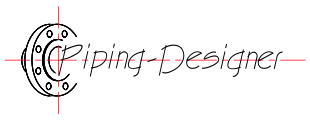Momentum
Momentum Formula |
||
|
\( p \;=\; m \cdot v \) (Momentum) \( m \;=\; \dfrac{ p }{ v } \) \( v \;=\; \dfrac{ p }{ m } \) |
||
| Symbol | English | Metric |
| \( p \) = Momentum | \(lbm-ft\;/\;sec\) | \(kg-m\;/\;s\) |
| \( m \) = Mass | \(lbm\) | \(kg\) |
| \( v \) = Velocity | \(ft\;/\;sec\) | \(m\;/\;s\) |
Momentum, abbreviated as p, also called linear motion or translational momentum, is the measure of inertia for objects in motion. It helps quantify how difficult it is to stop something. Momentum has both magnitude and direction, making it a vector quantity. The change in momentum is called impulse.
The law of conservation of momentum states that the total momentum of a closed system remains constant if no external forces act on it. This means that in the absence of external forces, the total momentum of a system before an event must be equal to the total momentum after the event. This principle is often applied in the analysis of collisions and explosions.

